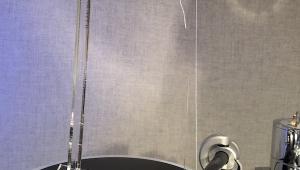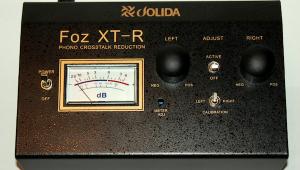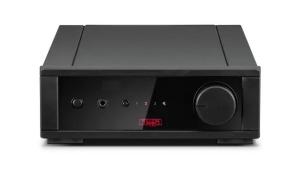Audio Additives Digital Stylus Force Gauge
Most of these units look similar but they are not all identical. There are a few things you should look for when buying one. For starters, make sure the one you choose is not magnetic. There are some out there that are, which means it will attract the cartridge and at best give you an inaccurate reading. At worst, use your imagination. Also make sure the one you're considering reads the VTF (vertical tracking force) close to the platter surface. Ideally it should approximate record height when no record is on the platter.
Why is that important? Tonearms come in three three balance flavors: "stable" "neutral" and "negative". A "stable balance" arm is one where the center of gravity of the moving system is located below the pivot point. That's true with most unipivot arms, where the lower center of gravity aids stability. A "negative balance" tonearm is one where the center of gravity is above the pivot point, and a "neutral balance" arm is one in which the center of gravity is in line with the pivot point.
If your tonearm is "stable balanced," the further from the record surface you measure tracking force, the less accurate will be your result. That's because a "stable balanced" arm wants to return to its resting position on the record surface. The further up from the record surface you measure the tracking force the greater will be the measured force because the arm wants to return to its resting point on the record surface.
In practical terms that means if you measure 2 grams well above the record surface, the tracking force will be lower and perhaps too low at the record surface. That is one reason the simple Shure "teeter-totter" device is not accurate with "stable balanced" arms.
A "negative balanced" arm means the higher up you measure VTF the lower will be the tracking force at the record surface. A "neutral balanced" arm doesn't care where you measure VTF. It will remain the same high or low.
If you have a unipivot arm like a VPI, Kuzma Stogi S, or pre "Magneglide™" Graham arms, it will be "stable balanced". Kuzma's 4 Point is negative balanced. Most gimbaled arms close to neutral balance. Graham's Phantom Supreme is neutral balanced. Each of these balance conditions produces different results under dynamic conditions such as when encountering a warp, but that's best discussed in a tonearm review.
For now let's just say measuring close to the record surface is a good idea regardless of your particular arm's balance. You can find out which your arm is by measuring VTF at the record surface and a few inches above. If the arm is neutral balance, you'll get the same result.
Back to the Audio Additives stylus force gauge! It is non-magnetic, measures close to the record surface, and is good to 3 decimal points. It also comes with a 5 gram weight that can be used to calibrate the scale, though it comes calibrated and should not need adjusting. It's powered by 2 included 'AAA' batteries, which is also good because they are less expensive and more readily available than the "button" type batteries found in some scales. The backlight automatically shuts off within 20 seconds and the entire unit shuts down within a minute.
The instructions tell you to use the supplied philips head screwdriver to remove the battery cover and install the batteries, but the batteries come pre-installed. However the terminals are plastic protected to keep the batteries fresh so open the battery covers, remove the batteries and peel off the plastic covers.
I found the Audio Additives to be accurate, reliable, easy to use and just as easy to recommend. If you have a spring suspended turntable, be sure to let it come to a rest after you place the scale on the platter or it won't set to 000 and be ready to use.










































